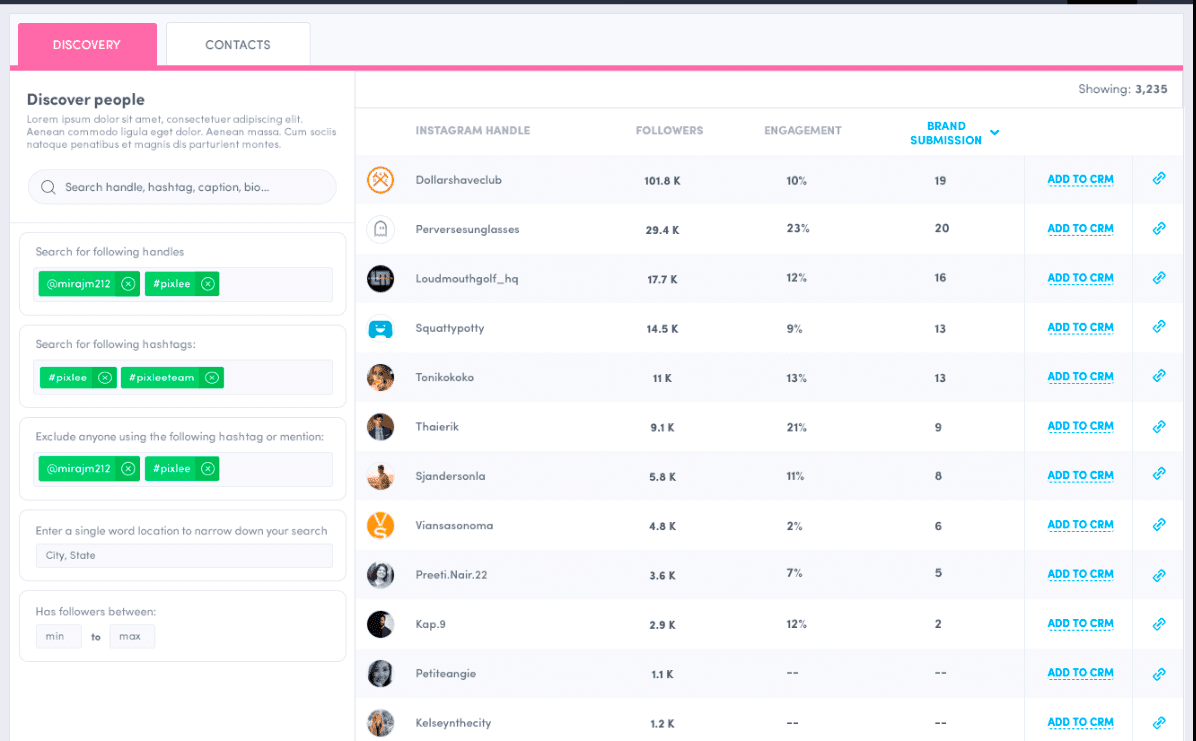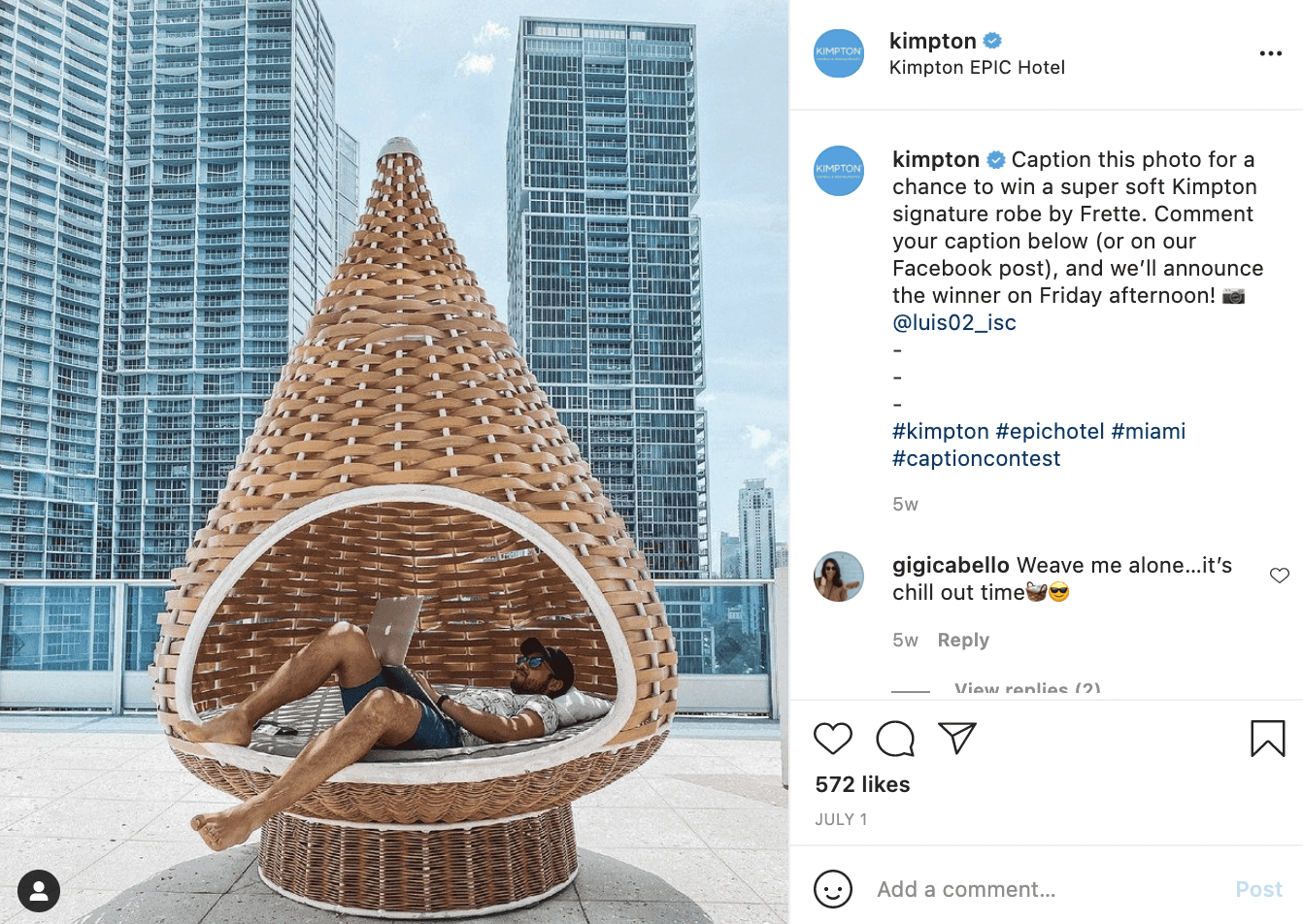Fighting for your audience’s attention share on social media is harder than ever before. You aren’t just competing against other brands’ sponsored posts – you’re competing against viral content creators. To stay competitive, many brands partner with content creators and influencers to seamlessly engage their audiences and even grow their reach. However, success with this method only comes with knowledge of what works and what doesn’t. While the influencer marketing industry is expected to reach a market cap of 5.8 billion by the end of 2021, 33% of brand teams still don’t measure the ROI of their influencer efforts. This makes it difficult to track campaign impact and sales reach and is one of the common influencer marketing mistakes your brand should avoid.
Top 10 influencer marketing mistakes to avoid
1. Using the wrong influencer management tool (or not using one at all)
An influencer management tool serves to help you build a strong relationship with your selected influencer, as well as discover potential influencers in your industry to partner with. It helps you keep track of communication, influencer progress and store essential information that will make the promotion go smoothly.

Pixlee’s platform [now Emplifi] lets brands search by different filters like location to discover their ideal influencer to begin a partnership with.
There are specific tools and platforms you should look for in your Influencer CRM Platform depending on your niche and industry. That’s why Pixlee offers versions ideal for eCommerce and small businesses, and options for enterprises looking to hire hundreds of influencers. Another mistake you could make is not using these platforms at all. Depending on how many influencers you’ll work with, you risk getting overwhelmed with data and messages and overlooking important aspects of your promotion.
2. Ruling out micro-influencers
When selecting the right influencer, you might think that the bigger their audience, the better the results. However, that’s not always the case. There are several levels of influencers, and each brings different benefits:
Nano influencers (often found among your existing customers)
Micro-Influencers
Macro influencers
Celebrities
While showing your product to a huge audience of mega-influencers might sound ideal, you shouldn’t rule out micro-influencers. They have about 1,000 to 50,000 followers, and they are people with a specific set of interests.

Tentsile uses affiliate marketing with its micro-influencers, giving these users a unique discount code to track campaign success and ROI. Micro-influencers often have higher engagement rates because they have a carefully-curated audience of individuals with niche interests. Check out more benefits of micro-influencers if you’re not convinced.
3. Not being transparent
There are too many influencers out there who don’t have a habit of disclosing their relationship with brands, and you should know that followers don’t like it. Not disclosing sponsorships is close to lying, and followers have every right to react negatively to those ads. It may sound counterproductive to demand that an influencer disclose their relationship with you. However, people want to know what brands these influencers are willing to work with, and this doesn’t have to compromise authenticity. Give the influencer creative freedom with their content, and they can still convey their genuine support for your brand while being honest about the partnership.
After all, the Federal Trade Commission requires that influencers disclose all affiliate relationships and brand sponsorships to remain compliant with the law. This measure is mostly aimed at preventing deceptive ads, and you should support your influencer in doing it.
4. Disregarding your existing fans as brand advocates
When you start a business, you’ll likely have customers who shop at your place regularly and post about your products on social media. Since word-of-mouth is the most powerful marketing channel, these people are ideal candidates to promote your brand on their personal accounts through user-generated content (UGC).

Kimpton regularly shares high-quality UGC collected with Pixlee to its social channels and in over 60 hotel destination site pages to show its followers how real people are interacting with the brand
Reach out to your followers and the people that showed support when you started. Your existing fans can be some of the best influencers. Consistently encourage them to share their experiences with your brand (whether on social media or direct upload to your site), and you’ll have a bank of authentic UGC to share on your brand’s own channels. UGC shows potential customers that you have built a trusting brand community and care about your loyal customers.
Pixlee’s platform allows brands to track mentions, hashtags, tagged images, and more on your social channels of choice, and automatically pulls in UGC from fans to be curated and published by your team. This offers a cost-efficient and authentic solution to content marketing and management.
5. Limiting your influencer campaign to social media
Depending on your brand’s niche, you’ll likely need an influencer who’s active on at least two major social media platforms. They’ll probably also have different numbers of followers on every account, which brings additional benefits in terms of tight-knit communities or wide exposure. However, social media networks are not the only place where influencers can promote your product. Depending on your industry, you might also consider paying your selected influencers to join you for email marketing campaigns, in-person events, podcasts, and other marketing endeavors.

Jewelry brand Jane Koenig features one of its influencers in a community marketing email, showcasing her favorite products along with a bio and link to her social handles.
6. Not creating different types of content
Every social network allows for creating different kinds of content, whether it’s text, video, or image. So, you should always work with the influencer on creating various types of content. Textual posts will help your selected influencer create some of the best-written posts and showcase their opinion of the product. They can also post short reviews or an excerpt of a more comprehensive review they wrote on their blog and link to your business. Images and videos should always represent the product as it is. That being said, influencers can still express their creativity with these posts. With different content options out there like unboxing videos and tutorials, influencers can showcase the product from all angles and pique the interest of your audience.

Morphe reshares a makeup video tutorial on Instagram from one of its influencers to diversify content, giving all the product details in the caption.
7. Missing a call-to-action (CTA)
The idea of hiring an influencer means they’ll be helping your company achieve a specific goal (or a few specific goals). This is why it can be important to include a CTA. This CTA should point your target audience to where they should go and push them towards what you want them to do (buy a product, subscribe to a service, etc.).
Depending on the channel, that CTA might be more top-of-the-funnel-oriented Influencers can also use exclamation points at the end of CTA, as it can sometimes add urgency and make the Call to Action pop. Make sure to let them maintain their authentic voice, though, so nothing sounds forced.
8. Being spammy with posts
Everyone knows that social networks and followers love activity. But posting too much might be detrimental, especially if the selected influencer is only posting to promote a product. The following examples can help you decide how much is too much when it comes to social media posts:
Twitter - three to 14 times a day, no more than once per hour
Facebook - two times per day, in the morning and evening
Instagram - one to three times per day
TikTok - once a day when you start; three to five times per week later on
Set a schedule for posting, and keep in mind that the influencer should also work with different time zones so that all their followers can see your brand and the product ad.
9. Not measuring the entire impact of the campaign
Once you decide on the influencers and start the campaign, it’s time to move forward. Influencers will work on a schedule, knowing exactly what you need them to do, but there’s more to be done on your end.
Still, for your campaign to be successful, you should also use your CRM platform to measure everything, from revenue and sales to impressions and engagement. Keep in mind that influencer engagement is the primary measure of a campaign’s success. Pixlee’s services allow brands to reshare creator content and monitor campaign success from each influencer in-platform.
Their engagement will tell you whether that influencer is also the right fit for future campaigns. Engagement also indicates how many people are receptive to your message. The higher the engagement, the better the chances of converting your audience into paying customers.
10. Not maintaining a post-campaign relationship
You might think that once you finish your campaign, you’ll be done with the influencer. But that’s not the best move to make. As a brand, you should work on the relationship with influencers. Try to stay in touch, especially if the promotion was successful. If you believe that you and the influencer are a good match, even if not necessarily one made in heaven, you should do your best to keep them. After all, if you see good results, you’ll want to maintain a mutually beneficial long-term relationship. This is another place an Influencer Marketing CRM Platform can be useful — you can revisit past campaigns and manage relationships with influencers who have already worked well with your brand.
If, however, you didn’t see results, there’s nothing else you can do but reach out to another influencer who you believe might be a better fit. Remember, you want to maintain your relationship with the best influencers in your niche. If you’re looking for the perfect influencer, know that finding one can be challenging without the right guidance. By having the right tools, processes and briefs in place, you can avoid the most common influencer marketing mistakes.
Andriana Moskovska is a Content Coordinator at Reviewlution.ca With a passion for finding the best services, products, we evaluate and review only the best solutions, even when it comes to Content Marketing. The degree in English Language and Literature, helps her to deliver well-researched and impeccably written content. Outside of work, she is a documentary junkie, one of the biggest Lord of the Rings fans you’ll ever meet.
Editor's Note: This article was originally published on pixlee.com. Any statistics or statements included in this article were current at the time of original publication.



































